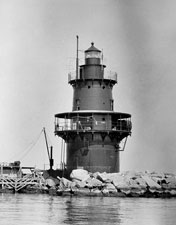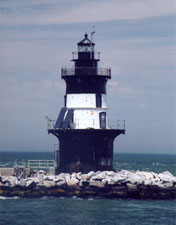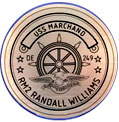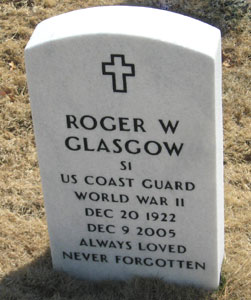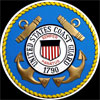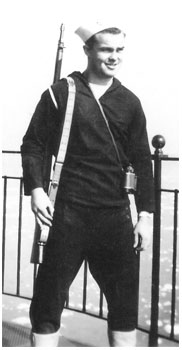| North
High School Wall of Honor Roger Williams Glasgow Graduated in January, 1942 |
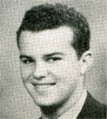 |
||||||||||||||||||||||||||||||||||||||||||||||||||||||||||||||||||||||||
| Research done by Claradell Shedd, class of 1953. PAGE IN PROGRESS | |||||||||||||||||||||||||||||||||||||||||||||||||||||||||||||||||||||||||
| Roger Williams Glasgow | |||||||||||||||||||||||||||||||||||||||||||||||||||||||||||||||||||||||||
|
Roger graduated from North High in the January, 1942 class. Roger enlisted in the US Coast Guard in Des Moines, IA. His next of kin was shown as Mr. David Paulson Glasgow, 3219 Sixth Avenue, Des Moines, IA. His service number was _________. |
|||||||||||||||||||||||||||||||||||||||||||||||||||||||||||||||||||||||||
|
|||||||||||||||||||||||||||||||||||||||||||||||||||||||||||||||||||||||||
|
|||||||||||||||||||||||||||||||||||||||||||||||||||||||||||||||||||||||||
|
|||||||||||||||||||||||||||||||||||||||||||||||||||||||||||||||||||||||||
|
|||||||||||||||||||||||||||||||||||||||||||||||||||||||||||||||||||||||||
|
***Orient Point Lighthouse; Long Island Sound The deep and narrow gap between Orient Point and Plum Island is called Plum Gut, and at ebb tide, the waters of Long Island Sound rush through at currents exceeding five knots, creating a churning mix of white-capped waves and dangerous riptides. This mile-wide passageway is challenging for even the most experienced mariners. Oyster Pond Reef, a dangerous obstacle lying just beneath the surface of the water, extends from Orient Point one-third of the way across Plum Gut. The Lighthouse Service started placing day markers near the outer end of the reef in the mid-1800s, but winter storms and huge ice floes dislodged or destroyed many of them. At first, plans were made to upgrade the day markers with a simple light beacon and fog signal, but in 1896, after considerable debate, it was decided to build a caisson tower composed of curved cast-iron plates, bolted together through flanges on the inside of the plates. The lighthouse was erected right on the reef, out at its far end, where it would be most beneficial to mariners. Construction began in October of 1898, but it turned out to be the stormiest autumn in decades. Forty-eight prefabricated steel plates making up the lower part of the foundation had been barged to the site, fastened together and sunk into place on October 24. Three days later a strong gale swept the entire caisson off its base and destroyed it, ending construction until the following spring. The lighthouse was completed in 1899 and exhibited its red light from a fifth-order lens for the first time on November 10th of that year. The new beacon proved too dim and was upgraded to a fourth-order lens on May 1, 1900. Although 600 tons of riprap had initially been placed around the foundation to protect the structure, prolonged exposure to powerful ice floes and winter storms created constant problems. Over the next three years, more than 10,000 additional tons of riprap were used at the base of the structure to build a breakwall. The pier, which sits on the reef and protects the lighthouse, is twenty-five feet wide at its base and thirty-two feet tall. The lighthouse tower itself is forty-five feet tall, with six interior decks. A few years after it was built, some cracks and rust were found on one side of the foundation. After more plates were added to patch the problems, the extra weight caused the lighthouse to tilt about five degrees. (Some accounts blame the tilt on currents undermining the foundation on that side.) The basic, no-frills style of this and similar lighthouses of its time was a reaction to the expensive and high-maintenance, but architecturally fascinating lighthouses previously built in the region. Not one of the most attractive lighthouses ever built, the brown and white structure was nicknamed “The Coffee Pot” by local mariners. Orient Point Lighthouse is similar in design to a number of other Coffee Pot lighthouses built around this time – starting in the early twentieth century, after automobiles became a common sight, they became more widely known as Spark Plug lighthouses. The first keeper at Orient Point was a Norwegian immigrant named Ole Nicholas Alfred Anderson. Since the station’s location in open water was considered too dangerous for a keeper's family, Anderson’s wife was forced to live in the nearby town of Orient, on Long Island. Anderson served as keeper until September of 1901, when he was transferred to Bridgeport Connecticut. Later, Anderson would serve twenty-five years at the twin lights at Navesink New Jersey. When Anderson's son Olaf sailed into New York Harbor from France aboard a troopship at the end of the First World War, he could see the light from his father's lighthouse welcoming him back to America. On August 30, 1912, the steamer Halyoake was passing through Plum Gut when its steering suddenly went out. The strong currents turned the ship, and with its engines still in gear, it headed straight for the Orient Point Lighthouse. The ship's captain ordered the engines to full reverse, while at the lighthouse Keeper Charles Whitford watched and anxiously braced himself for the inevitable impact. Fortunately, the captain had acted just in time. Whitford wrote that “the bow ran up on the rocks surrounding the station, but the steamer backed off immediately, and no damage was done to either the steamer or the station.” Orient Point Lighthouse had a fairly quiet history from that point, although there is a local legend that says one of the keepers during the 1920s went mad from the isolation and jumped to his death from the outer walkway. On April 5, 1958, the Coast Guard Cutter Hawthorne arrived at the Orient Point Lighthouse and carried away all the station's furniture and personnel. The Coast Guard keepers were replaced by “the click of micro-switches and solenoid valves.” In 1970, the Coast Guard announced plans to tear down the automated lighthouse, which they deemed unsafe for servicing personnel and too expensive to repair, and replace it by a “reinforced pipe tower.” However, a citizens’ campaign was soon organized to save their beloved Coffee Pot, and the Coast Guard backed down. Chesterfield Associates was hired to pump concrete into the base, sandblast the tower, and cover it with a new coat of paint and an epoxy preservative. When the work was over, the tower was restored to its former respectable appearance. The Fresnel lens was replaced by a modern optic in 1988, and in 2000 the Coast Guard returned for major work on the lighthouse. The tower's emergency generator and equipment for filtering, pumping, and storing the associated fuel were removed, and solar panels and batteries were installed to eliminate the light's dependency on a submarine power cable. The lighthouse is now a less hazardous place and easier to access as well thanks to the installation of a new boat ramp. In June of 2011, Orient Point Lighthouse was declared excess to the needs of the United States Coast Guard and made available to eligible organizations under the provisions of the National Historic Lighthouse Preservation Act of 2000. Qualified entities were given sixty days to submit a letter of interest and were required to obtain an agreement from the State of New York to occupy the submerged lands on which the lighthouse stands. If no suitable organization is found, the lighthouse will be sold at auction. Orient Point Lighthouse cannot be reached by land and is not open to the public, although it can be viewed from Orient Point. While the lighthouse can be approached by water in private vessels, care must be taken to avoid the shallow reefs surrounding the lighthouse. A year-round ferry that runs between Orient Point and New London offers good views of at least five lighthouses, including Orient Point, Plum Island, Little Gull Island, New London Ledge, and New London Harbor. USS Marchand (DE-249) USS Marchand (DE-249) was an Edsall-class destroyer escort built for the U.S. Navy during World War II. She served in the Atlantic Ocean the Pacific Ocean and provided destroyer escort protection against submarine and air attack for Navy vessels and convoys. Marchand (DF 249) was laid down by Brown Shipbuilding Co., Houston, Texas, 30 December 1942; launched 30 March 1943; sponsored by Mrs. Charles D. Marchand, mother of Fireman First Class Marchand; and commissioned 8 September 1943, Lt. Comdr. G. F. Lynch, USCG, in command. Marchand departed Houston, Texas, 14 September for shakedown training off Bermuda until 31 October when she arrived at the Charleston Navy Yard. After antisubmarine warfare exercises while based at Quonset Point, Rhode Island, in November, she arrived at Provincetown, Massachusetts, the 20th. After service as target ship for training operations of Torpedo Squadron 13, the escort ship sailed for Norfolk, Virginia, arriving 12 December. As the flagship of Escort Division 20, Marchand departed Norfolk 14 December escorting a convoy to Europe, and arrived in the Straits of Gibraltar 2 January 1944 to turn over the convoy to British warships. She then set course for Morocco, arriving Casablanca 7 January. The ship got underway the next day for the east coast, arriving New York 24 January. Marchand conducted exercises in Block Island Sound and Casco Bay, Maine, until departure from New York 22 February with convoy CU 15 for Ireland. About 2200 on 25 February, during a heavy gale, SS El Coston rammed SS Murfreesboro. As Marchand came to the assistance of the badly damaged and burning merchant ships, El Coston's bow rammed Marchand on her starboard side amidships damaging the plates of her forward control room. Marchand then stood by and received 28 survivors while USS Ricketts (DE-254) took on board 33 others. The next day Marchand steamed for Bermuda as escort for El Coston. Shortly after midnight the 27th the remaining 56 crew members of El Coston had to abandon ship. After the merchant ship sank at 0142, Marchand directed her course for New York, where the survivors were debarked 1 March. On 6 April, MARCHAND again sailed in convoy from New York for Northern Ireland, arriving Lisahally 17 April. She returned to New York 3 May. From 21 May 1944 to 11 June 1945, she made nine more round trips escorting convoys from New York or Boston to United Kingdom ports. MARCHAND departed New York 19 June for training in the Chesapeake Bay, then to Guantanamo Bay, Cuba, before sailing for the South Pacific. She arrived Pearl Harbor 26 July. With the Japanese surrender 15 August, she cleared Pearl Harbor 12 days later for maneuvers off Eniwetok and Kwajalein Atolls, Marshalls, from 3 September to 15 October. She continued on to Guadalcanal, arriving the 18th, before returning to Pearl Harbor 10 November by way of Canton, Phoenix Islands, where she debarked her U.S. Coast Guard passengers. On 17 November, the escort ship steamed for home, arriving San Diego, 6 days later to debark more men of the Coast Guard. On the 25th, MARCHAND headed for the east coast, via the Panama Canal, reaching New York 11 December. She then got underway 21 January 1946 for Green Cove Springs, Fla., arriving the 23d for inactivation. On 25 April 1947, she decommissioned and entered the Atlantic Reserve Fleet at Green Cove Springs. Into 1960 she is berthed at Orange, Tex. |
|||||||||||||||||||||||||||||||||||||||||||||||||||||||||||||||||||||||||
|
|||||||||||||||||||||||||||||||||||||||||||||||||||||||||||||||||||||||||
|
|||||||||||||||||||||||||||||||||||||||||||||||||||||||||||||||||||||||||
|
|||||||||||||||||||||||||||||||||||||||||||||||||||||||||||||||||||||||||
| 12/20/11. Died 12/09/05. | |||||||||||||||||||||||||||||||||||||||||||||||||||||||||||||||||||||||||
| Music: "Semper Paratus" (Always Ready), the US Coast Guard Song | |||||||||||||||||||||||||||||||||||||||||||||||||||||||||||||||||||||||||
| Home
|
Back/allyears |
WWI |
WWII |
Korea |
Vietnam |
Afghanistan/Iraq |
Lyrics
|
Refs/Awards |
Contact ©2025-csheddgraphics All rights reserved. All images and content are © copyright of their respective copyright owners. |
|||||||||||||||||||||||||||||||||||||||||||||||||||||||||||||||||||||||||
